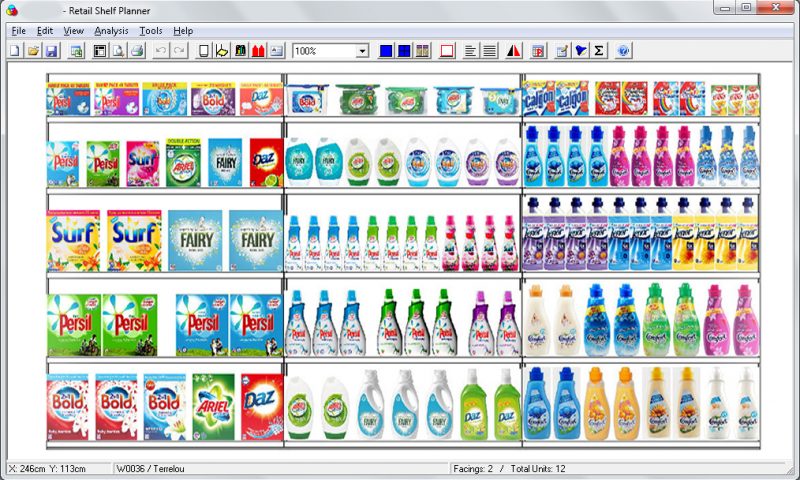What are planograms and why do we need them?

A simple definition
A planogram is a tool used by retailers and suppliers, it is a drawing that provides details as to where a product should be placed on a shelf and how many facings a product should have. A planogram is used by the retailer to increase sales and by suppliers to justify space allocated to brands and help new product development. Planograms are a visual way of presenting how products or ranges should look in store and are also a very useful tool for presenting where new products should be positioned.
What is the function of a planogram?
The ultimate goal of a planogram is to increase sales by ensuring the right products have the best position on shelf and the correct amount of facings so as not to go off sale. Retailers routinely change the layout of their stores to take into account changes in season, new product ranges or changes in consumer demand, retailers use planograms to decide how the section will look and what products will be included in the new layout. It is also a great way to ensure the layout follows the consumer decision process to ensure it is easy to shop.
Key Features of a planogram
Planograms (sometimes called layouts) will consist of a number of sections (sometimes called bays) with a number of shelves per section, the shelf heights and position will depend on the products height and size, each shelf will have a number of products with one or more facings depending on their sales volume. A products position will take into account its volume sales, its margin and a number of other factors depending on the retailers strategy.
Who uses planograms?
Wholesalers and Suppliers
The position and number of facings products have will dramatically affect their performance in store i.e. if the product is at eye level it will it will be in the “eye line” of shoppers leading to increased visibility and increased propensity to sell, whereas a product on the bottom shelf will be harder to see and therefore may lead to lower sales. Planograms if done correctly can lead to increased sales and profitability while at the same time ensuring the fixture is shopper friendly and easy to shop, manufactures and suppliers who don't have at least a working knowledge of how planograms work or have access to space planners are playing catch up in a very competitive arena.
Retailers
Planograms are created ahead of time before any changes are made instore to give retailers a visual representation of what the fixture will look like with any planned changes, they can also be used to predict sales or profit changes based on the number of listings and facings etc. Major retailers will require suppliers to present their new products on planograms so as to show correct or proposed position on shelf. The frequency of updated planograms will depend on the retailer and are updated 4 times per year on average. Major retailers will have a schedule of when a category is updated called a “planogram window” or “PGR” planogram review and give suppliers the option of presenting their suggested changes before the next review.
How do you create a planogram?
There are various software tools available to create planograms which also vary widely in prices and functionality, ranging from a few hundred euro to thousands of euro. The type of software you will need will depend on the complexity of your business needs. In saying that most are very similar in their functionality and will produce similar outputs. The only real difference is some will require a lot of training to use and some like Retail Shelf Planner you can get up and running within hours.
What type of analysis can planograms provide?
Some of the things you can you learn from planograms (provided you link with your epos data)
- Your Best Sellers
- Your shelf warmers or poor sellers
- Which promotions sold best
- How effective your displays were
- Which categories sell best
- Where your profit is coming from
- Hot and cold parts of the planogram/gondola
- Shelf capacity and stock holding/turnover
- Are you following consumer decision tree
- What your fixture will look like in store before implementation
- How NPD compares with existing brands